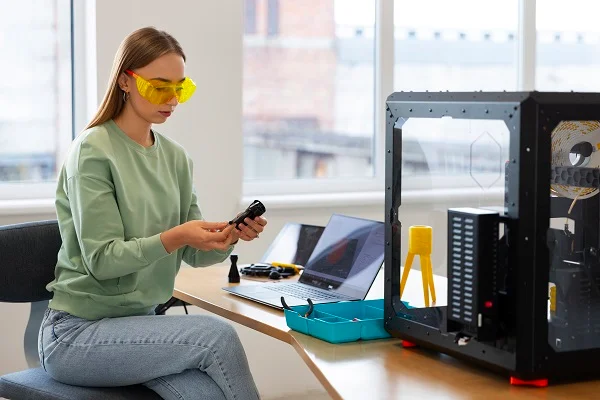Building a budget gaming PC in 2025 is an exciting yet strategic process. With the latest advancements in technology, you can get powerful gaming performance without breaking the bank. Whether you’re a beginner or an experienced PC builder, this guide will walk you through the step-by-step process of assembling a gaming PC on a budget.
Why Build a Budget Gaming PC in 2025?
Many gamers prefer building their own PC instead of buying a pre-built one because:
- Cost Efficiency: You control the budget and only pay for the components you need.
- Customization: You can select the best components that fit your gaming style.
- Future Upgrades: Easily upgrade parts when needed, unlike pre-built PCs.
- Better Performance: Get optimal performance by choosing high-quality parts.
Now, let’s get started with the essential components you need for a budget gaming PC build in 2025.
Essential Components for a Budget Gaming PC Build
To build a budget-friendly gaming PC, you need to choose the right components wisely. Here’s what you’ll need:
1. Processor (CPU)
- Recommended: AMD Ryzen 5 5600X or Intel Core i5-12400F
- Why? These CPUs offer great gaming performance at a reasonable price.
2. Graphics Card (GPU)
- Recommended: NVIDIA RTX 4060 or AMD RX 7600
- Why? These GPUs provide excellent 1080p gaming performance without overspending.
3. Motherboard
- Recommended: B550 (for AMD) or B660 (for Intel) chipset motherboard
- Why? These are affordable yet support high-speed memory and future upgrades.
4. RAM (Memory)
- Recommended: 16GB (2x8GB) DDR4 3600MHz
- Why? 16GB is the sweet spot for modern gaming, preventing lag and slowdowns.
5. Storage
- Recommended: 1TB NVMe SSD (WD Black SN770 or Samsung 980)
- Why? SSDs significantly reduce game load times and improve system performance.
6. Power Supply (PSU)
- Recommended: 550W-650W 80+ Bronze PSU (Corsair, EVGA, or Seasonic)
- Why? A reliable PSU ensures stable power delivery to your components.
7. Case (Cabinet)
- Recommended: Mid-Tower ATX case with good airflow
- Why? Proper airflow keeps your PC cool, enhancing performance and lifespan.
8. Cooling System
- Recommended: Stock CPU cooler (for budget builds) or budget air cooler
- Why? Adequate cooling prevents overheating and extends component life.
Step-by-Step Guide to Assembling Your Gaming PC
Step 1: Prepare Your Workspace
- Choose a clean, static-free area.
- Gather necessary tools like a screwdriver and cable ties.
Step 2: Install the CPU
- Carefully place the CPU onto the motherboard.
- Secure the CPU cooler on top.
Step 3: Install RAM
- Insert the RAM sticks into the motherboard’s memory slots.
- Ensure they click into place properly.
Step 4: Install the Storage (SSD/HDD)
- Mount the NVMe SSD in the M.2 slot or connect a SATA SSD.
- Secure the SSD with a screw if required.
Step 5: Install the Power Supply (PSU)
- Mount the PSU into the case and route the cables properly.
- Connect the required power cables to the motherboard and GPU.
Step 6: Install the Motherboard in the Case
- Align the motherboard with the case’s standoff screws.
- Secure it using screws to keep it in place.
Step 7: Install the Graphics Card (GPU)
- Insert the GPU into the PCIe slot.
- Secure it with screws and connect the power cable.
Step 8: Cable Management and Final Setup
- Route all cables neatly to ensure proper airflow.
- Double-check all connections before powering on.
Optimizing Your Budget Gaming PC for Best Performance
Once your budget gaming PC build is ready, follow these tips for optimal performance:
- Update BIOS and Drivers: Ensure your motherboard and GPU drivers are up-to-date.
- Adjust Power Settings: Set your PC to “High Performance” mode.
- Monitor Temperatures: Use software like HWMonitor to keep an eye on CPU & GPU temps.
- Overclocking (Optional): Slight overclocking can improve performance if done safely.
- Install Essential Software: Use MSI Afterburner for GPU monitoring and Razer Cortex for game optimization.
Final Thoughts
Building a budget gaming PC in 2025 is easier than ever with affordable yet powerful components. By selecting the right CPU, GPU, RAM, and storage, you can create a PC that delivers high-performance gaming without exceeding your budget. Whether you’re playing AAA titles or competitive eSports, this guide ensures you get the best experience. Are you ready to build your dream gaming PC?





